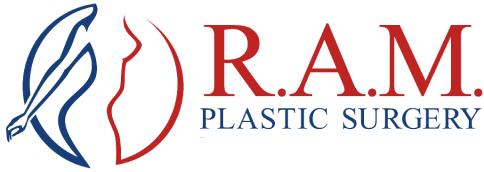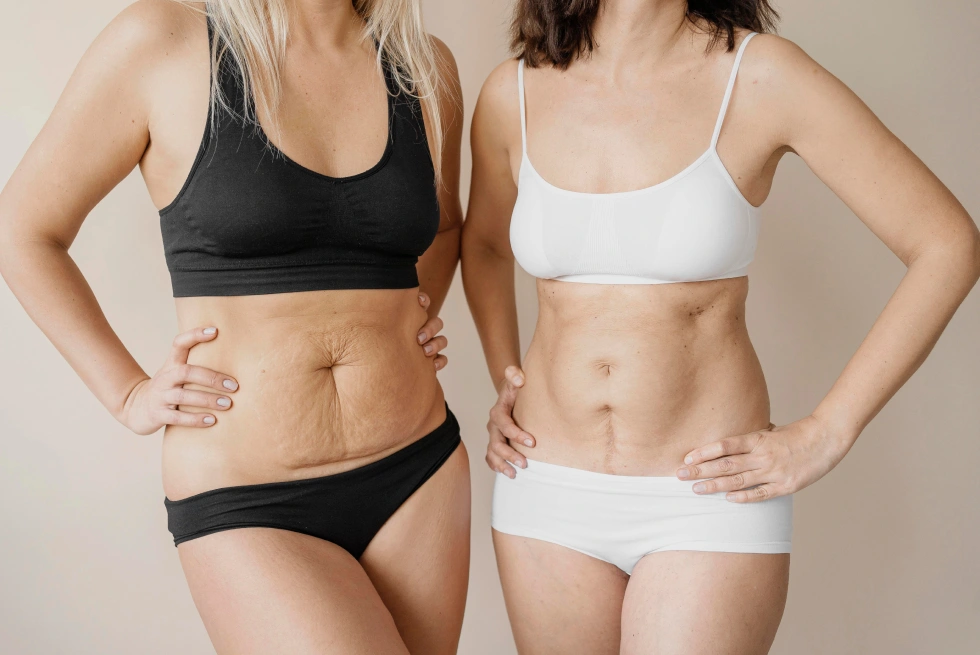A Mommy Makeover is a transformative procedure designed to restore a woman’s pre-pregnancy body by addressing common concerns such as sagging breasts, abdominal laxity, and stubborn fat deposits. While the surgery itself can deliver dramatic and life-changing results, the recovery process is equally important for achieving long-term satisfaction. Understanding how long it takes to recover from a Mommy Makeover is crucial for setting realistic expectations and ensuring that patients are mentally and physically prepared for the healing journey. While many focus on the aesthetic outcomes, it’s the recovery time and process that often have the most significant impact on achieving optimal results. In this article, we will explore the different stages of Mommy Makeover recovery, from the immediate post-operative period to long-term healing, with valuable insights and tips for a smoother, quicker recovery.
The First Few Days After Surgery
During this initial period, it’s essential to prioritize rest and minimize physical activity to allow your body to focus on healing. Swelling, bruising, and discomfort are normal, especially in the areas where fat was removed or transferred, as well as the breast and abdominal areas. Most patients experience some level of tightness and soreness, particularly in the abdominal region due to tummy tuck procedures.
You’ll be instructed to wear compression garments to help manage swelling and provide support to the surgical sites. These garments also help prevent fluid buildup, which can hinder the healing process. It’s important not to remove these garments without your surgeon’s permission, as they play a key role in shaping and stabilizing the treated areas.
During the first few days, you will likely need assistance with tasks that require bending or lifting, as these movements could strain the surgical sites and lead to complications. You’ll also be advised to avoid sitting or lying directly on your stomach or buttocks to prevent pressure on the fat grafts and encourage optimal results from the surgery.
While the first few days can feel challenging, they set the foundation for the rest of your recovery. Following your surgeon’s instructions during this critical time is essential to ensure that your body heals efficiently and that the results of your Mommy Makeover are long-lasting.
The First Week of Recovery
The first week of recovery after a Mommy Makeover is typically when patients experience the most noticeable discomfort, but it is also when the body starts adapting to the changes made during surgery. During this week, it’s essential to focus on rest, as the body’s natural healing processes require energy and time. Expect significant swelling and bruising in the treated areas, especially around the abdominal area if a tummy tuck is performed, and the breasts, if a breast augmentation or lift was included. The tightness and soreness may make it difficult to move freely, so gentle movements and assistance from a family member or caregiver will be important.
Patients should continue to wear compression garments as instructed by their surgeon. These garments are crucial during the first week as they help minimize swelling, support the new contours of the body, and assist with lymphatic drainage. In addition, patients will likely be prescribed pain medication to manage discomfort, though it’s important not to rely on them for too long.
During this period, it’s vital to avoid activities that could strain the surgical sites, such as heavy lifting, bending over, or excessive walking. Focus on walking short distances to promote circulation, but don’t overexert yourself. This is also a good time to monitor any signs of complications, such as unusual swelling or redness, and reach out to your surgeon if any concerns arise.
The First Month of Recovery
During this time, swelling and bruising gradually decrease, although some residual swelling may persist, especially in the abdominal and breast areas. The tightness that patients feel in the early days may start to subside, but it’s not uncommon to still experience some discomfort. At this point, many patients can begin to return to light daily activities, though they should still avoid strenuous movements, bending, or lifting.
This is a critical period for monitoring your progress. The skin and tissues will be adapting to their new shape, and it’s essential to continue wearing compression garments as directed to help maintain proper contour and prevent complications. While it might feel tempting to resume normal routines, it’s important to avoid excessive physical exertion, as overdoing it can lead to unnecessary strain on healing areas.
The first month also introduces a shift in lifestyle. Your surgeon may advise starting gentle exercises, like walking or stretching, to improve circulation and prevent blood clots. Some patients also begin to see initial results, though full results will not be visible until later as the swelling continues to subside. Throughout the month, staying hydrated, eating nutritious foods, and following your surgeon’s aftercare plan will support the healing process and help keep your recovery on track.
Long-Term Recovery (2-6 Months)
As the recovery process progresses into the 2-6 month range, most of the swelling will have significantly reduced, revealing more refined and permanent results from your Mommy Makeover. However, it’s important to remember that healing is still ongoing. During this period, the body continues to adjust to the changes made during surgery. For many patients, the fat grafts in the buttocks and other treated areas will continue to settle and integrate into the surrounding tissues. Some changes in contour may still occur as the skin tightens and the body finds its new equilibrium.
This stage of recovery is when patients begin to feel more like themselves again. Most individuals can return to moderate physical activities, including light exercise, and may start working out more intensely, although some activities, such as heavy lifting or high-impact exercises, should still be avoided to prevent strain on the healing areas. It’s essential to stay mindful of your body’s signals and avoid overexerting yourself during this period.
During the 2-6 month phase, you will also notice changes in the texture and firmness of your skin. As the tissue heals and reshapes, any remaining tightness should continue to soften, allowing for more comfortable movement. While the external appearance begins to stabilize, deeper healing still occurs within the body, and full results may not be visible until 6 months or even a year after surgery. Monitoring your progress and attending follow-up appointments with your surgeon during this time will ensure everything is on track for long-term success.
Tips for a Smooth Recovery
Recovering from a Mommy Makeover can be a challenging but rewarding journey. While following your surgeon’s instructions is critical, there are additional strategies that can further enhance your healing process and help you recover more smoothly. These tips focus on optimizing your body’s natural healing abilities, improving comfort, and ensuring the long-term success of your transformation.
- Prioritize sleep and rest: During recovery, your body needs time to repair itself. Sleep is essential for tissue regeneration, so try to rest as much as possible and avoid physical strain.
- Stay hydrated: Drinking plenty of water helps to flush out toxins, reduce swelling, and support overall body function during recovery. Proper hydration also promotes better skin health.
- Maintain a balanced diet: Focus on consuming nutrient-rich foods, such as lean proteins, fruits, vegetables, and whole grains. Nutrients like vitamin C, zinc, and collagen-boosting foods can speed up tissue repair and enhance healing.
- Use the right pillows: To prevent any pressure on the treated areas, use pillows that provide support for your back, head, and legs when sitting or sleeping, especially for areas like the abdomen and buttocks.
- Avoid stress: Stress can negatively impact your immune system and hinder recovery. Practice relaxation techniques, such as deep breathing or meditation, to help manage any post-surgery stress.
- Wear compression garments consistently: These garments help reduce swelling and support the body’s contour during healing. Don’t skip wearing them, as they play a significant role in the recovery process.
By focusing on these practical, often overlooked aspects of recovery, you can ensure a smoother and more successful healing journey following your Mommy Makeover.
Factors That Can Impact Recovery Time
While the general recovery timeline for a Mommy Makeover is fairly consistent, various factors can affect how quickly or slowly a patient heals. Understanding these factors can help you better manage expectations and adjust your recovery plan accordingly. Certain aspects, including your overall health, lifestyle, and the specifics of your procedure, can significantly influence how your body responds after surgery.
- Individual health and pre-existing conditions: Patients who are generally healthy with no underlying medical conditions tend to recover more quickly. Conditions like diabetes, high blood pressure, or thyroid issues can slow down the healing process.
- Extent of the procedure: The more procedures performed during a Mommy Makeover, the longer the recovery time. For example, combining a tummy tuck, breast lift, and liposuction will require a longer recovery than a single procedure. The complexity of each surgery adds to the healing time.
- Age: Age can play a role in recovery, with younger patients often healing faster due to better skin elasticity and quicker tissue regeneration. However, older patients can still recover well with proper care and adjustments to their recovery plan.
- Lifestyle choices: Factors like smoking, alcohol consumption, and inadequate nutrition can impede the healing process. Smoking, in particular, reduces circulation, making it harder for the body to heal effectively. A healthy diet and hydration are crucial for quicker recovery.
- Adherence to post-operative care: Following the post-surgery care instructions meticulously, including wearing compression garments, avoiding strenuous activities, and attending follow-up appointments, can accelerate recovery and help avoid complications.
Recognizing how these factors come into play will give you a better understanding of your personal recovery process and help you take proactive steps to ensure a smoother, faster healing journey.
Conclusion
The recovery process after a Mommy Makeover is a crucial part of achieving the desired results. While the recovery timeline can vary, understanding the stages, managing your expectations, and following proper aftercare are key to a smooth and successful healing process. By taking care of your body, being patient, and adhering to your surgeon’s instructions, you can ensure the best possible outcome. If you’re considering a Mommy Makeover or have questions about the recovery process, the team at RAM Plastic Surgery is here to guide you. Visit us or call 312-337-3010 to schedule a consultation today.







